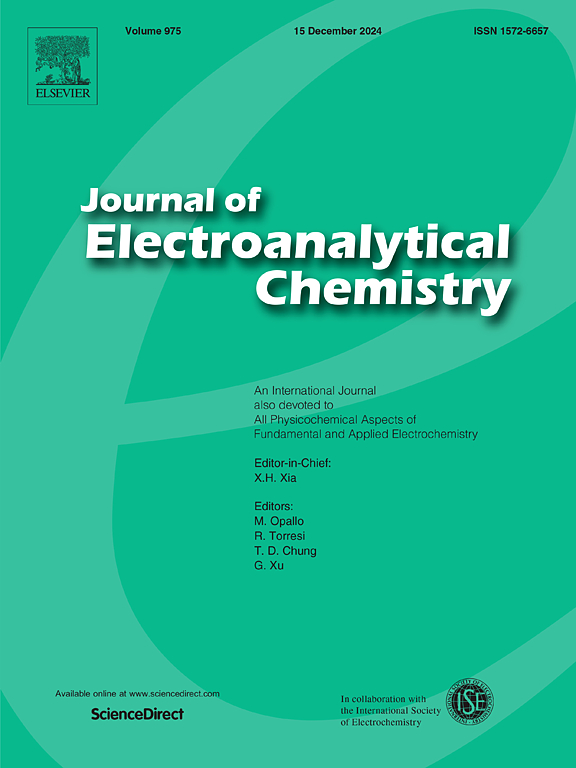Study on the performance of metal-loaded carbon black cathode for electro-Fenton degradation of SMX
IF 4.1
3区 化学
Q1 CHEMISTRY, ANALYTICAL
引用次数: 0
Abstract
Sulfamethoxazole (SMX) is a kind of widely used antibacterial antibiotic, which can be detected in different water bodies, and poses great harm to aquatic organisms and human health. In this study, different transition metal-loaded carbon oxide blacks (M−OBC, M = Mn, Fe, Cu, or Co) were prepared as cathodic catalysts for the degradation of SMX in the electro-Fenton system. Under optimal conditions of 0.3 mM Fe2+ concentration, −0.5 V, and pH 3, the Mn-OBC catalyst exhibited the most remarkable degradation efficiency, achieving a complete removal of SMX from the water within a mere 10 min. The relationship between catalyst structure and performance was further investigated through morphological and structural characterization. It was revealed that the existence of Mn3+/ Mn4+ significantly accelerates the rapid conversion of Fe2+ and H2O2. Electrochemical performance tests were used to investigate the redox capacity of the catalysts, while radical quenching experiments and electron paramagnetic resonance (EPR) spectroscopy were employed to qualitatively detect ·OH radicals as active oxygen species. Three degradation pathways were ascertained by LC-MS. Simultaneously, toxicity analysis of degradation intermediates showed that most of the intermediates were less toxic than SMX. Therefore, this study provides a reference value for solving low-concentration persistent organic pollutants in water.
求助全文
约1分钟内获得全文
求助全文
来源期刊
CiteScore
7.80
自引率
6.70%
发文量
912
审稿时长
2.4 months
期刊介绍:
The Journal of Electroanalytical Chemistry is the foremost international journal devoted to the interdisciplinary subject of electrochemistry in all its aspects, theoretical as well as applied.
Electrochemistry is a wide ranging area that is in a state of continuous evolution. Rather than compiling a long list of topics covered by the Journal, the editors would like to draw particular attention to the key issues of novelty, topicality and quality. Papers should present new and interesting electrochemical science in a way that is accessible to the reader. The presentation and discussion should be at a level that is consistent with the international status of the Journal. Reports describing the application of well-established techniques to problems that are essentially technical will not be accepted. Similarly, papers that report observations but fail to provide adequate interpretation will be rejected by the Editors. Papers dealing with technical electrochemistry should be submitted to other specialist journals unless the authors can show that their work provides substantially new insights into electrochemical processes.

 求助内容:
求助内容: 应助结果提醒方式:
应助结果提醒方式:


